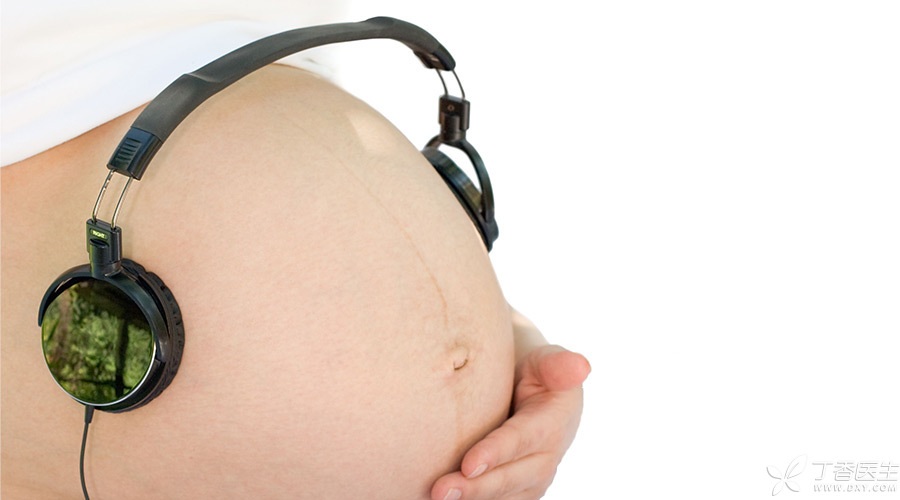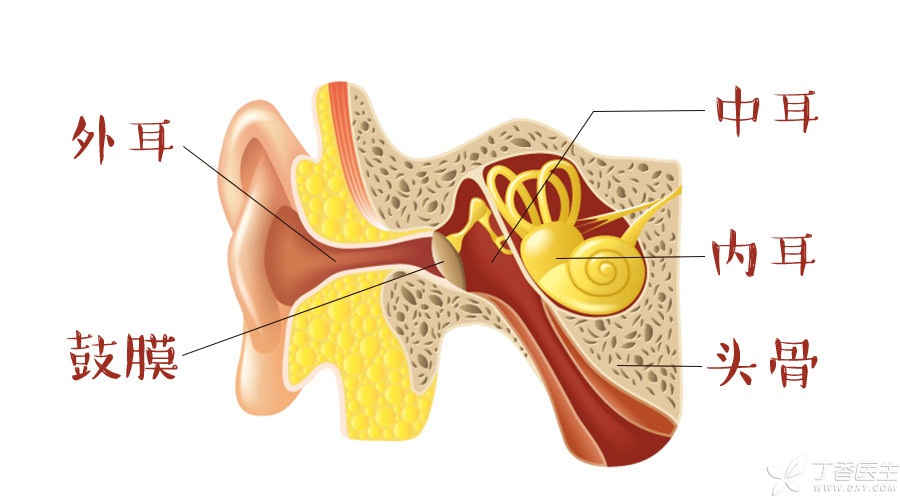
If you ask a pair of happy parents-to-be who have what’s hopes for their babies, although the answers will be varied, [healthy and intelligent] will definitely become the top hot word. Smart, intelligent, intelligent, hearing is the most important feeling in the human body after vision.
How is hearing produced?
The vibration of an object will produce sound waves, and when the ear receives the sound waves, it will produce hearing.
The human ear consists of three parts: the outer ear, the middle ear and the inner ear. The outer ear is the visually visible ear, which is like a small funnel and is responsible for collecting sound stimuli. The middle ear transmits the vibration of sound to the inner ear. The cochlea of the inner ear is like a [translator], which converts the vibration into nerve signals and transmits them to the brain, so we can hear the sound.

However, the sound we can hear is limited. Only sound waves with vibration frequencies ranging from 20 to 20,000 Hz (Hz) can be heard by human ears. However, infrasound waves below 20 Hz (such as butterfly flapping wings) and ultrasonic waves above 20,000 Hz (such as bat calls) cannot be heard by most of us human beings.
However, one thing to point out is that babies live in an environment surrounded by amniotic fluid before birth. They mainly collect and transmit the vibrations of sound waves through skulls and jaws, and then transmit them to the brain through the inner ear. You can feel, when you scratch your head gently-[swish swish swish], did you [hear]? This is called bone conduction.
Functional Development of Fetal Hearing
The baby is able to listen to all directions before it is born.
As early as the 4th week of pregnancy, the fetal auditory organs have begun to develop, but it was not until the 24th week that the fetal sound transmission system was basically developed and began to be able to hear sounds from the outside world.
However, at first they can only hear medium-frequency sounds. As the auditory system continues to develop and mature, the audible range increases to low-frequency sounds and finally to high-frequency sounds. Even so, the audible range of fetuses is extremely limited compared with adults.
By 28 weeks, the fetus will be able to respond to the sound it hears. At this time, many prospective parents are stirring-[don’t let the child lose at the starting line], a short slogan, which has now become the golden rule in the parenting world. As a result, many [small meat balls] still in their mothers’ stomachs have to [go to school] early.
Among many prenatal education methods, prenatal education music has the highest popularity rate. Is this kind of prenatal education method with hearing as the carrier really useful? To answer this question, first of all, we must first understand the small environment in our mother’s belly.
Is it what that the baby hears in his belly?
In fact, the environment in which the fetus is located is not quiet. Inside the uterus, there is a world full of sound.
There are mainly two kinds of sounds that the baby can hear in the mother’s belly:
1. Made by Mother
- [howling… howling] This is the sound of amniotic fluid, blood and other body fluids flowing. [gurgling… gurgling] This is the sound of mother’s gastrointestinal peristalsis. [plop… plop] This is the sound of mother’s heartbeat, It is also the most regular sound that the fetus can hear. After the baby is born, let TA lie prone on her mother’s chest and listen to the familiar heartbeat as if she had returned to the warm small house, which can calm the uneasiness of their initial arrival in the world.
In addition, it is the voice of mother.
2. The people and things in the mother’s own environment make it
In the mother’s belly, the baby can mainly hear the relatively loud sounds (such as thunder) and close-range sounds in the environment.

Is prenatal education of sound useful?
On the one hand, we know that the dominant way for the fetus to hear sound is bone conduction, which determines that the fetus can more easily recognize the sound produced to the mother itself, and the babies therefore prefer to respond to the mother’s voice.
On the other hand, because the sound energy from the outside world will be continuously weakened through clothes, belly and amniotic fluid, and the fetus will eventually be able to hear much less than we think. However, low-frequency sounds will be less attenuated during conduction, so low-frequency sounds are more easily heard by them.
Therefore, prospective fathers should not be discouraged or lazy. Low-frequency male voice is also a proper prenatal education artifact.
As a result, expectant mothers can tell their babies a few small stories every day, and expectant fathers can chat with the babies on the belly of expectant mothers, which can not only make the babies know and get familiar with their parents, but also enhance the interaction with the babies and stimulate their brain development. Oh, well, the most beautiful education is the simplest!
However, the classical or natural prenatal education music, which focuses on relaxation, cannot actually play the role of the legendary gods, but expectant mothers can relax their body and mind and enjoy their mood by listening to music moderately, which is of great benefit to the development of their babies.
The fetus in the late pregnancy can already recognize and remember rhythm and melody, Mothers-to-be can play one or two specific soothing music at a fixed time every day. After the baby is born, when they are agitated, familiar music can calm them down. However, when playing music, attention should be paid to controlling the type, volume, duration and distance of sound sources so as not to harm the baby’s underdeveloped auditory system.
As for the legendary Mozart music that can improve intelligence, don’t take it seriously. Listening to music can’t make cows produce more milk or children smarter.
I have to talk about ultrasound examination
Although we can control the distance between various sound sources in our life, expectant mothers during pregnancy inevitably have [intimate contact] with a special sound source, that is B-ultrasound.
B-ultrasound actually uses a kind of sound wave, because it exceeds the upper limit of human hearing frequency, so we cannot hear it.
Fetuses have a narrower hearing range than adults, so they cannot hear either.
But does it definitely not matter if you can’t hear it? In response to this problem, quite a number of studies have proved that there is no what difference in auditory development between babies who have received ultrasound examination and those who have not received ultrasound examination.
In short, it is safe for the fetus to undergo standard ultrasound examination during pregnancy because:
-
Moderate sound intensity: the sound intensity of standard ultrasonic probes is controlled within a safe range;
-
Short time: Ordinary prenatal ultrasound examination usually takes only 5-10 minutes (abnormality removal B-ultrasound is slightly longer), and the detection time for each organ is very limited.
-
Embryo maturation: Although tissues in development are more sensitive to ultrasound, prenatal ultrasound examination is mainly concentrated in the second and third trimester of pregnancy, when the fetal auditory system has basically developed, so the impact is relatively small.
Generally speaking, prenatal ultrasound examination is very necessary, necessary and important for giving birth to a healthy baby due to medical needs. Parents and expectant mothers should never stop eating because of choking.
